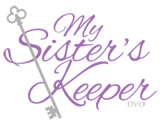Domestic violence (also referred to as “intimate partner violence” or IPV) within LGBTQ relationships is estimated to occur with approximately the same frequency as within heterosexual relationships, with a prevalence of approximately 20%–35%.
Despite this high rate, domestic violence within LGBTQ relationships is underreported due to many factors, including discrimination, shame, isolation, and fear of revictimization, and victims face significant hurdles to getting help.
Forms of Abuse
Though the underlying characteristics of domestic violence remain the same – controlling behavior marked by coercion, intimidation and isolation – there are certain forms of abuse specific to LGBTQ domestic violence.
An abuser may threaten to “out” his/her partner (both in terms of sexual and gender identity), a threat that, in some circumstances, can have serious professional, financial and familial consequences if carried out. An abusive partner may bolster these threats with attempts to convince his/her partner that prejudice within the broader community will prevent the abused partner from accessing needed services and support. Particularly in small and/or rural communities, the abuser may monopolize community support and available resources, further isolating the abused victim.
In some states, a same-sex partner may not have access to legal protections or claim to the children they help raise if they are not the biological parent. Not only can abusers threaten to take the children, but victims of abuse who flee with the children in such situation may face criminal charges of kidnapping. Alternatively, abusers might threaten to “out” their partner to an ex-spouse or other family members who might attempt to gain custody of the victim’s biological children on account of the information.
Economic abuse, while not specific to LGBTQ relationships, can have unique characteristics in this context. Abusers might steal the identity of their same-sex partner to control finances or threaten other criminal activity. Additionally, because LGBTQ partners often do not formally combine their finances, an abuser might put assets in their name and debt in the victim’s name to ensure that the victim remains financially dependent on them for basic needs.
In addition to intimate partner abuse, LGBTQ individuals (and those perceived as LGBTQ) may be subject to emotional and physical abuse from their biological families. Lesbians in particular may be physically, emotionally and sexually abused within the private sphere, in addition to being married or impregnated against their will in an attempt to “re-orient” them to the “proper” sexual identity – heterosexuality.
LGBTQ youth are also frequently rejected by families, leading to high rates of homelessness and increased vulnerability to other sources of victimization.
